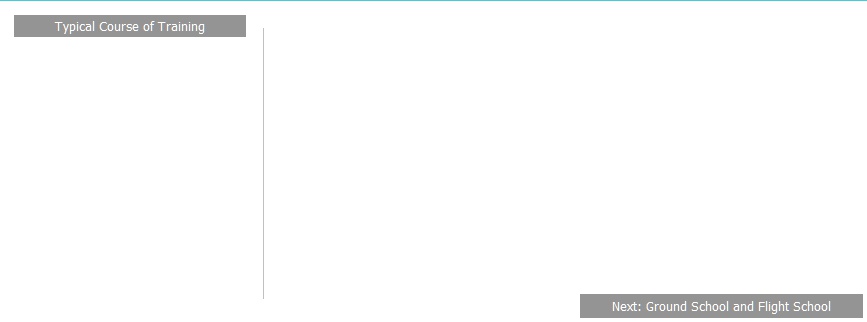


The course of training for the private pilot certificate is driven by FAA regulations and by the
Practical Test Standards (PTS). The regulations tell your instructor what flight experience you
need to have in order to take the private pilot oral and practical exams. In fact the first thing the
examiner will do on the day of your flight test is check your logbook to ensure that you have the
required experience—and woe is the flight instructor who signs your form 8710 without double
and triple checking that you've met the prerequisites. You will be required to have 40 hours of
flight time to take the exam, but the average is closer to 70 hours, especially in urban areas.
The PTS specifies the standard to which you need to be able to fly on the day of your exam (and hopefully afterward). Your course of study can be broken into three parts: Presolo, postsolo, and flight test prep. Your presolo will concentrate on basic airmanship and on fulfilling the regulatory requirements to allow you to solo (take the plane up alone). The postsolo period will emphasize learning and perfecting required maneuvers, normal and abnormal procedures, aeronautical decision making and on planning and executing the required cross country. Finally, the test prep portion will fill in any missing gaps in your training and help you develop consistency, so that you not only fly within the PTS standards, but always fly within the standards. The AOPA publishes a typical set of lesson plans which can give you an idea of one way in which the material can be structured.
The PTS specifies the standard to which you need to be able to fly on the day of your exam (and hopefully afterward). Your course of study can be broken into three parts: Presolo, postsolo, and flight test prep. Your presolo will concentrate on basic airmanship and on fulfilling the regulatory requirements to allow you to solo (take the plane up alone). The postsolo period will emphasize learning and perfecting required maneuvers, normal and abnormal procedures, aeronautical decision making and on planning and executing the required cross country. Finally, the test prep portion will fill in any missing gaps in your training and help you develop consistency, so that you not only fly within the PTS standards, but always fly within the standards. The AOPA publishes a typical set of lesson plans which can give you an idea of one way in which the material can be structured.

GOTHAM GROUND TRAINING
Aviation Ground School in your backyard...
(when your backyard is Central Park)
(when your backyard is Central Park)
All content copyright 2012 © Gotham Ground Training. Other content used under license or with permission | All Rights Reserved
Did you know?...
A “cross country” flight does not have to be a flight from New York to California (although this does qualify). For the purposes of your private pilot ASEL certificate, a cross country is a flight that includes a point of landing that was at least a straight-line distance of more than 50 nautical miles from the original point of departure.
As you can imagine, there is an exception to this rule for people doing all of their flight training on islands....
A “cross country” flight does not have to be a flight from New York to California (although this does qualify). For the purposes of your private pilot ASEL certificate, a cross country is a flight that includes a point of landing that was at least a straight-line distance of more than 50 nautical miles from the original point of departure.
As you can imagine, there is an exception to this rule for people doing all of their flight training on islands....
